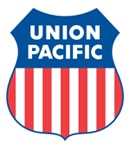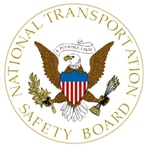
The train rammed the float at 62 mph, killing four veterans and injuring 11 other veterans and their wives.
Read the complete story at the Lubbock Avalanche-Journal.

The train rammed the float at 62 mph, killing four veterans and injuring 11 other veterans and their wives.
Read the complete story at the Lubbock Avalanche-Journal.

On Tuesday, the National Transportation Safety Board will meet to consider the probable cause of the accident and to make safety recommendations.
Read the complete story at NewsObserver.com.

Chair since 2009, Hersman was nominated for a third term by President Barack Obama on Aug. 1 and the nomination was confirmed by the Senate on Oct. 16. Her term as chair expires on Oct. 15, 2015, and her five-year term as a NTSB member expires on Dec. 31, 2018.
Read the complete story at Progressive Railroading.
TULSA, Okla. — An engineer killed in a fiery train collision in the Oklahoma Panhandle last year suffered from serious vision problems for much of his life, underwent several corrective procedures in the years leading up to the crash and even complained that he couldn’t distinguish between red and green signals, a doctor told a federal oversight board Tuesday.
Despite his failing vision, the engineer continued driving freight trains and was guiding one of the ones that collided June 24, 2012, near town of Goodwell, killing him and two other railroad workers and causing about $15 million in damage.
Read the complete story at the Associated Press.
The National Transportation Safety Board has issued 12 new safety recommendations as a result of its investigation of the Sept. 30, 2010, collision of two freight trains near Two Harbors, Minn.
The NTSB recommendations were issued to the following organizations: the Federal Railroad Administration, Canadian National Railway, Union Pacific Railroad, Canadian Pacific Railway Limited, Kansas City Southern Railway Company, Norfolk Southern Railroad, American Short Line and Regional Railroad Association, BNSF Railway, the Brotherhood of Locomotive Engineers and Trainmen and the United Transportation Union.
In a letter to SMART Transportation Division (UTU) President Mike Futhey, NTSB Chairman Deborah Hersman requested that UTU “work with the Canadian National Railway and the Brotherhood of Locomotive Engineers and Trainmen, to develop and implement a non-punitive peer audit program for the Canadian National Railway’s North Division, focused on rule compliance and operational safety.
“The NTSB is vitally interested in this recommendation because it is designed to prevent accidents and save lives.”
“The safety of our members and all railroad employees, as well as the general public, is of the utmost concern to the UTU and we intend to work with CN and the BLET to implement the NTSB’s recommendation,” Futhey said.
Additional NTSB recommendations can be found here.
The NTSB is an independent federal agency charged by Congress with investigating every civil aviation accident in the United States and significant accidents in other modes of transportation, including railroad, highway, marine, and pipeline.
The NTSB determines the probable cause of the accidents and issues safety recommendations aimed at preventing future accidents. In addition, it carries out special studies concerning transportation safety and coordinates the resources of the federal government and other organizations to provide assistance to victims and their family members affected by major transportation disasters.

GUYMON, Okla. – Three Union Pacific crewmembers died in a June 24 head-on collision between two freight trains near here that produced a diesel fuel-fed fire so intense that the thick, black smoke could be seen for 10 miles and caused the closing of a nearby small airport and evacuation of a nearby trailer park. The fire burned for more than 24 hours.
Dead are UTU member Brian L. Stone (Local 923), age 49, of Dalhart, Texas; engineer Dan Hall and engineer John Hall (no relation to Dan Hall). Stone had been a conductor since September 2003.
Conductor Juan Zurita (Local 923) reportedly jumped to safety and was uninjured. Engineer Dan Hall is the cousin of Local 923 delegate Randy N. Johnson.
Guymon is some 130 miles north of Amarillo, Texas, on the former Southern Pacific Golden State route linking El Paso with Kansas City. Union Pacific absorbed Southern Pacific in 1996.
The Oklahoman newspaper quoted NTSB member Mark Rosekind that one of the trains – and he declined to specify which — failed to take a siding and that no signal or brake malfunctions were initially found based on preliminary analysis of event recorders. “One train had the right of way,” Rosekind said. “We’re still getting the data to figure out what was scheduled to happen. There was a side track, and we’re trying to figure out what was supposed to be where, and when.”
Rosekind said no cellphones have been recovered, but that the NTSB intends to review phone records belonging to the four crew members. Federal regulations prohibit the use of electronic devices, including cell phones, while on duty.
Two members of the UTU Transportation Safety Team assisted NTSB investigators at the scene.
Stone is the fourth UTU member killed on duty in 2012. Local 887 (Harvey, N.D.) member Robert J. Glasgow, 38, was killed May 28 in a switching accident near Kenmare, N.D.; and Local 1383 (Gary, Ind.) member Michal M. Shoemaker, 55, was killed in a switching accident Jan. 30 in Gary, Ind. Los Angeles County Metropolitan Transportation Authority driver and Local 1563 member Alan Thomas, 51, was murdered aboard his bus May 20.
Ten UTU rail members were killed on duty in calendar year 2011, eight in 2010 and eight in 2009.

The NTSB action followed its investigation of five rear-end collisions where the NTSB concluded that crewmembers “failed to operate their trains at the required restricted speed.” Two of the rear-end collisions resulted in fatalities.
Said the NTSB:
“Signal systems provide for the safe separation between trains. However, there are times when trains are authorized to occupy the same sections of track. In these cases, safe train operations rely solely on crewmember compliance with the railroad’s restricted speed requirements.
“Typically, these requirements include being prepared to stop within one-half the range of vision. Complete understanding of, and strict compliance with, restricted speed requirements are absolutely mandatory to prevent catastrophic train collisions.”
Specifically, the NTSB urged the UTU and the Brotherhood of Locomotive Engineers and Trainmen to educate their respective rail membership so that all involved recognize “the importance of operating their trains in accordance with restricted speed operating rules.”
Additionally, the NTSB urged the UTU and the BLET to work collaboratively with railroads “to identify the potential for similar occurrences and to take appropriate mitigating actions.”
The NTSB also urged railroads to “emphasize adequate training and ensure the compliance of train crews operating at restricted speeds.”
The NTSB does not have regulatory authority – only investigative authority. Thus, the NTSB makes recommendations to carriers, labor organizations and the Federal Railroad Administration – the latter having regulatory authority over rail safety.
The five accidents referred to by the NTSB were:
* Red Oak, Iowa, April 17, 2011, on BNSF
* Low Moor, Va., May 21, 2011, on CSX
* Mineral Springs, N.C., May 24, 2011, on CSX
* DeWitt, N.Y., July 6, 2011, on CSX
* DeKalb, Ind., Aug. 19, 2011, on Norfolk Southern
UTU National Legislative Director James Stem, in commending the NTSB for its “diligence in helping to save lives,” said, “Compliance with restrictive speed is a common sense application of safety concepts when following another train. This is another example of operating rules that offer good advice.”
FALLON, Nev. – The truck driver who died when his tractor-trailer slammed into Amtrak’s westbound California Zephyr here June 24, had accumulated nine traffic tickets since 2007 – five for speeding in a commercial vehicle, twice for speeding in his personal automobile, once for a seat belt violation and once for illegally using a cellphone while driving.
Also killed in the highway-rail grade crossing accident was an Amtrak conductor and UTU member – Laurette Lee – and four passengers. Scores were injured, including Amtrak assistant conductor and UTU member Richard d’Alessandro.
Three of truck driver Lawrence Reuben Valli’s five speeding violations were issued while he was a school-bus driver for an unnamed California school system, reports The Los Angeles Times, citing information from the Nevada Department of Motor Vehicles.
In 2007, according to the San Francisco Examiner, Valli, while operating his own automobile, slammed into the rear of another auto near Reno on I-80 and was ticketed for speeding.
There has been no statement from the National Transportation Safety Board whether Valli was traveling in excess of the highway’s posted speed limit when his truck crashed into the Amtrak train. Skid marks on the highway were found and may help investigators determine the truck’s speed prior to impact.
NTSB member Earl Weener, serving as the agency’s spokesperson at the accident scene, said an outward facing camera in the Amtrak locomotive recorded that the signals and gates were working.
The NTSB said June 27 that a cellphone found in the wreckage, and thought to belong to Valli, will be examined to determine if it was in use while he was driving.
The San Francisco Examiner quoted a spokesperson for the Nevada Department of Motor Vehicles that Valli had other offenses on his driving record that could not be disclosed – “Oh, yeah, lots more. He was a busy guy,” the spokesman said. Yet, according to the Nevada Department of Motor Vehicles, there is no record of Valli having had his commercial driver’s license suspended or revoked.
As for the trucking company that employed Valli, the Associated Press reported that it had been issued seven safety violations over the past year, and one vehicle had been ordered out of service.
A trucking publication, Fleet Owner, reported, “Make no mistake, along with the lives lost and the injuries caused by the wreck, the crash is a sharp stick in the eye of all those in trucking and government alike who have been very publicly working across numerous fronts this year to increase commercial-vehicle safety performance.”
WASHINGTON – The National Transportation Safety Board has updated its “Most Wanted” transportation safety improvements. Included are recommendations for improved bus, rail and aviation safety.
Following are the NTSB’s comments of interest to UTU members:
Fatigue
Airplanes, buses and trains are complex machines that require the full attention of the operator, maintenance person and other individuals performing safety-critical functions.
Consequently, the cognitive impairments to these individuals that result from fatigue due to insufficient or poor quality sleep are critical factors to consider in improving transportation safety.
Operators of transportation vehicles need to have sufficient off-duty time to obtain sufficient sleep. But duty schedules are only part of the equation. Even when an individual has enough time to get rest, medical conditions, living environment, and personal choices can affect the ability to obtain quality sleep.
Human fatigue is subtle; at any given point, the traveling public could be at risk because those operating airplanes, buses or trains, or the individuals responsible for maintaining vehicles, do not realize until it is too late that they cannot safely complete their duties because of fatigue.
To make matters worse, people frequently are not aware of, or may deny, ability impairments caused by fatigue. Just because an operator or mechanic is not yawning or falling asleep does not necessarily mean that he or she is not fatigued.
What can be done: Continued research on the manifestations of fatigue will help in further identifying mechanisms that can counter, and ultimately eliminate, fatigue.
Such research needs to recognize the unique aspects of fatigue associated with each mode of transportation, such as the effect of crossing multiple time zones or being required to work during periods of the day when circadian rhythms increase the risk of fatigue.
Fatigue-countering mechanisms must include science-based, data-driven hours-of-service limits.
The medical oversight system must recognize the dangers of sleep-related medical impairments, such as obstructive sleep apnea, and incorporate mechanisms for identifying and treating affected individuals.
Employers should also establish science-based fatigue management systems that involve all parties (employees, management, interest groups) in developing environments to help identify the factors that cause fatigue; and monitor operations to detect the presence of fatigue before it becomes a problem.
Because “powering through” fatigue is simply not an acceptable option, fatigue management systems need to allow individuals to acknowledge fatigue without jeopardizing their employment.
Bus Safety
Motorcoaches are among the safest vehicles on the road. They are rarely involved in highway accidents.
However, motorcoaches transport 750 million passengers annually, with each bus carrying a substantial number of people. Therefore, when something does go wrong, more people are at risk of death or injury. As in any traffic crash, an occupant’s chance of surviving and avoiding injury increases when the person is retained in the vehicle, and particularly in his or her seating position.
Without standards for roof strength, window glazing, and a protected seating area, motor coach accidents can be catastrophic. Even when the motorcoach remains relatively intact during an accident, passengers lacking a protective seating environment can be thrown from their seating area and killed or injured.
What can be done: Adequate standards for roof strength, window glazing, and occupant protection must be developed and implemented. These standards must ensure that the vehicles maintain survivable space for occupants during all types of crashes with significant crash forces, including rollovers.
Manufacturers are moving ahead with various seating area safety options, such as seat belts, but the development and implementation of government standards is needed to ensure a consistent level of safety across the fleet. Motorcoach interiors should be more occupant friendly in order to prevent injury in the event of a crash.
In addition, after a crash, occupants need to be able to identify exits and quickly leave the vehicle.
Commercial Aviation
Crew resource management (CRM) training is designed to improve crew coordination, resource allocation and error management in the cockpit. CRM training augments technical training, enhances pilots’ performance and encourages all flight crew members to identify and assertively announce potential problems by focusing on situational awareness, communications skills, teamwork, task allocation, and decision-making within a comprehensive framework of standard operating procedures.
Takeoffs and landings, in which the risk of a catastrophic accident is particularly high, are considered the most critical phases of flight.
Unlike the airspace above the United States, which spans millions of square miles, the runway environment is a far more limited area, often with a steady stream of aircraft taking off and landing on intersecting runways, sometimes in poor weather and with limited visibility.
What can be done: Reducing the likelihood of runway collisions is dependent on the situational awareness of the pilots and time available to take action — often a matter of just a few seconds. A direct in-cockpit warning of a probable collision or of a takeoff attempt on the wrong runway can give pilots advance notice of these dangers.
Requiring specific air traffic control clearance for each runway crossing would reduce the chances that an airplane will inadvertently taxi onto an active runway on which another aircraft is landing or taking off.
Situational awareness is also important in addressing runway excursions. Pilots need accurate information on runway conditions. Equipment should be properly set for takeoff or landing and function properly.
Pilot training and procedures should emphasize conducting distance assessments for all landings, especially on contaminated runways; training on maximum performance stopping on a slippery runway; and identifying the appropriate runway for their aircraft.
The Federal Railroad Administration’s permanent ban on use of electronic devices, including cellphones, became effective March 28, 2011.
Please make careful note of the following:
The NTSB has authority under the law to demand these records from cellphone providers. These actions are taken because the NTSB considers distractions to be major contributors to collisions, derailments and fatalities, and the use of electronic devices, including cellphones, are considered a distraction.
Moreover, a carrier’s rule relating to the FRA ban on the use of electronic devices, including cellphones, may be more restrictive than the FRA regulations.
It is thus essential you also be aware of your carrier’s rules as they relate to the electronic device and cellphone ban. While the FRA does not permit carrier bans to be less restrictive than the FRA final rule on the ban, the FRA does permit carriers to have a more restrictive rule.
The UTU Transportation Safety Task Force cautions that the safest course of action for our members working in train service is to turn off your cellphone at the beginning of a shift and keep it off.
Many of our members are taking a leadership role in reminding fellow crew members to turn off cellphones and other electronic devices.
We understand many conductors and engineers are starting their shift by showing other crew members that they have turned off their phone.
This is an outstanding way to promote safety through leadership, and we encourage each UTU member to be a leader in this effort.
In solidarity,
UTU Rail Safety Task Force
Greg Hynes, UTU Arizona state legislative director
Steve Evans, UTU Arkansas state legislative director
Jerry Gibson, UTU Michigan state legislative director
Highlights of the permanent ban on electronic devices and cellphones:
To read the FRA’s final 40-page rule imposing the permanent ban on electronic devices, including cellphones, click on the following link:
http://edocket.access.gpo.gov:80/2010/2010-23916.htm
April 4, 2011